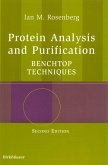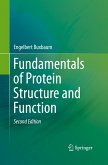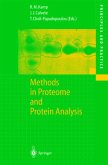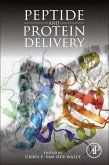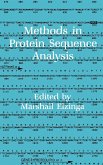This comprehensive, practical, and user-friendly manual is designed to be a practical progression of experimental protocols that an inexperienced investigator may follow when embarking on a biochemical or biotechnology project. It will also appeal to experienced researches and graduate students as a benchtop handbook which, without sacrificing scientific concepts, maintains the spirit of experimentation.
How one goes about analyzing proteins is a constantly evolving ?eld that is no longer solely the domain of the protein biochemist. Inves- gators from diverse disciplines ?nd themselves with the unanticipated task of identifying and analyzing a protein and studying its physical properties and biochemical interactions. In most cases, the ultimate goal remains understanding the role(s) that the target protein is playing in cellular physiology. It was my intention that this manual would make the initial steps in the discovery process less time consuming and less intimidating. This book is not meant to be read from cover to cover. The expanded Table of Contents and the index should help locate what you are seeking. My aim was to provide practically oriented information that will assist the experimentalist in benchtop problem solving. The appendices are ?lled with diverse information gleaned from catalogs, handbooks, and manuals that are presented in a distilled fashion designed to save trips to the library and calls to technical service representatives. The user is encouraged to expand on the tables and charts to ?t individual experimental situations. This second edition pays homage to the computer explosion and the various genome projects that have revolutionized how benchtop scienti?c research is performed. Bioinformatics and In silico science are here to stay. However, the second edition still includes recipes for preparing buffers and methods for lysing cells.
How one goes about analyzing proteins is a constantly evolving ?eld that is no longer solely the domain of the protein biochemist. Inves- gators from diverse disciplines ?nd themselves with the unanticipated task of identifying and analyzing a protein and studying its physical properties and biochemical interactions. In most cases, the ultimate goal remains understanding the role(s) that the target protein is playing in cellular physiology. It was my intention that this manual would make the initial steps in the discovery process less time consuming and less intimidating. This book is not meant to be read from cover to cover. The expanded Table of Contents and the index should help locate what you are seeking. My aim was to provide practically oriented information that will assist the experimentalist in benchtop problem solving. The appendices are ?lled with diverse information gleaned from catalogs, handbooks, and manuals that are presented in a distilled fashion designed to save trips to the library and calls to technical service representatives. The user is encouraged to expand on the tables and charts to ?t individual experimental situations. This second edition pays homage to the computer explosion and the various genome projects that have revolutionized how benchtop scienti?c research is performed. Bioinformatics and In silico science are here to stay. However, the second edition still includes recipes for preparing buffers and methods for lysing cells.


